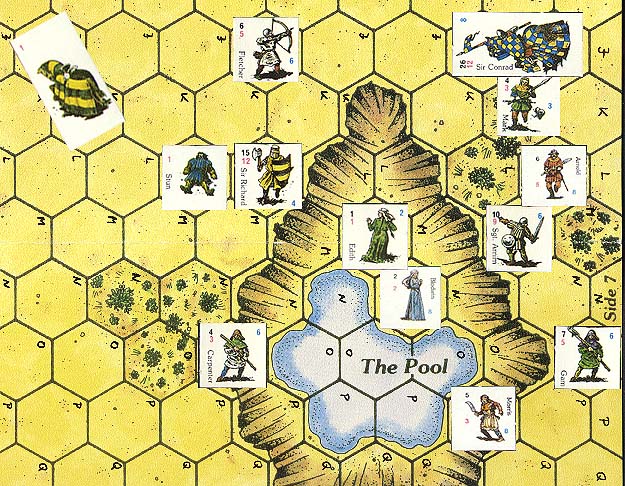While my earliest taste for miniatures wargaming was for platoon level WW2 actions, probably prompted by the vast number of Airfix plastic figures on the market in the late 1970s and my early obsession with WW2 comics (I blame my uncle's large collection of Commando comics), in the mid-1980s I discovered medieval skirmish wargames in a big way when I bought Cry Havoc, by Standard Games.
At the time, myself and a school chum had the idea of running a play by mail game about dynastic power politics in a speculative medieval kingdom called the Grand Duchy of Irongrim. It was Game of Thrones really, and years before its time. We had spots for 30 baronial players plus potentially some other senior figures in the realm, like clerics and dukes. While we were working on the economic rules for the campaign, we lacked a set of battle rules to resolve the anticipated combat that would occur between rival player factions. I originally bought Cry Havoc because I hoped they would let us resolve battle scale games. Sadly, that was not what they were.
However, having said that, Cry Havoc was a great game. It provided you with everything needed to play skirmish level battles in the Middle Ages, including lovely full colour maps and pieces. The artwork was part of the appeal. Later sets took the game to the Holy Land, Japan, and introduced siege warfare. But there was enough in the original box for hours of fun.
Players controlled small groups of warriors, including knights, archers, men-at-arms and peasants. The combat was grittily realistic - a mercenary with a bill could carve up a peasant in very short order, and even mighty knights would be brought down with concentrated bow fire. Soldiers were typically worn down through exhaustion and multiple wounds to the point where they eventually succumbed, and critical kills were rare. We never played with the optional morale and command and control rules, but I'm sure these would have added yet another dimension to the game.
 |
| The game boasted lovely maps and artwork. |
Cry Havoc included a scenario book with a range of interesting battles, including the introductory one involving two groups of peasants in a fight outside a pub, to a more sophisticated - and slightly one-sided - peasants revolt scenario, which gave one side all the peasants, backed up with some archers, and the other all the mounted knights. This helped us understand how feudalism only disappeared with the arrival of gunpowder weapons!
One of my favourites was a three player scenario featuring an attack on a merchant caravan, with one player taking the role of the bandits, and another a relief force riding out from a nearby village. The bandit had to score as much loot as he could, and escape, before the heavy brigade arrived and carved up his retinue of brigands.
Cry Havoc featured an interesting damage system - if your attack exceeded an enemy's damage threshold, his counter was replaced with a wounded version, which featured similar artwork, but this time showing the character in more disarray (e.g. bandaged head, on a crutch, clothes looking torn and bloodied) and with reduced statistics. It helped you to keep track of who was running out of puff / starting to take hits.
 |
| Playing pieces included donkeys and civilians. |
This was not a game about chivalry - I saw many a knight slain once he was unhorsed, by a bunch of billmen running up and ganging up on him. It was very, very hard to kill someone in a straight fight unless you were a knight - usually two or more soldiers came at a target from multiple directions. Once you learned that lesson, stragglers and isolated soldiers could be picked off quickly. Crossbows were also ludicrously deadly - they could only shoot once per turn, and IIRC could not move and shoot, but they were about the only battlefield weapon that stood a good chance of killing a knight straight away. Needless to say, one priority in this game was taking down all the enemy's crossbowmen as quickly as possible!
I've still got my copy of Cry Havoc, although my Samurai Blades game was destroyed in a flood, and I sold my copies of Siege and Outremer years back. Medieval skirmish for me remains a very fun topic for gaming regardless. I'm particularly interested by the arrival of new rules sets like Dux Bellorum and Lion Rampant from Dan Mersey, and it's given me a hankering to return to some of the sunny pastures of my youth.

And don't forget the new Historic One games....
ReplyDelete